Tagetes minuta, also known as Mexican marigold, Mexican mint marigold, or Spanish tarragon, is an aromatic herb native to Central and South America. In India, it is commonly known as sufeda barri or khursani ajwain. With its pleasant, anise-like flavor, Tagetes minuta makes an excellent addition to any herb garden.
Growing tagetes minuta offers many benefits. The edible leaves and flowers can be used to season a variety of dishes. Medicinally, tagetes minuta has antioxidant, antimicrobial, and insecticidal properties. It is also easy to grow and care for, making it ideal for beginner gardeners.
Have a glance at How to Grow Prosopis Cineraria in India here
Tagetes Minuta – Key Facts
| Name | Tagetes Minuta |
| Height | 0.5 – 2 Feet |
| Origin | Southern half of South America. |
| Type | Herb |
| Outdoor/Indoor | Both |
| Soil | Well-drained soil |
| Temperature | 10°- 30°C |
| Water | Once a week |
| Sunlight | 6 to 8 hours daily. |
| Flowers | Small, enclosed within a green sheath, in dense terminal clusters. |
This guide will walk through everything you need to know about successfully growing Tagetes minuta in India, from ideal growing conditions to care instructions. With the right information, you can enjoy a bountiful harvest of this versatile herb.
Common Names: Huacatay or Wacatay, and in other regions it is common as chinchilla, chiquilla, chilca, zuico, suico, or anisillo.
Tagetes Minuta, known by various names in :
Hindi: Daao, Naipatri (दाओ, नाइपत्री)
Bengali: Ondho Mili Pushpo (অন্ধ মিলি পুষ্প)
Kannada: Asukambole, Kashiru Soppu (ಅಸುಕಂಬೊಳೆ, ಕಷಿರು ಸೊಪ್ಪು)
Tamil: Aaru Manjal, Sem Manjal (ஆரு மஞ்சள், செம மஞ்சள்)
Telugu: Pacha Kunkudu (పచ్చ కుంకుడు)
Gujarati: Khairu, Van Thumdo (ખૈરુ, વન થૂંદો)
Marathi: Bhaji, Ranatgeru (भाजी, रणतगेरू)
Malayalam: Poduthalai, Aarkam (പൊടുതല, ആർകം)
Oriya: Daao (ଦାଓ)
Punjabi: Khakra, Daao (ਖਕਰਾ, ਦਾਓ)
Assamese: Daao, Kuppi
Urdu: Khaira (خیرہ)
Growing Conditions for Tagetes Minuta
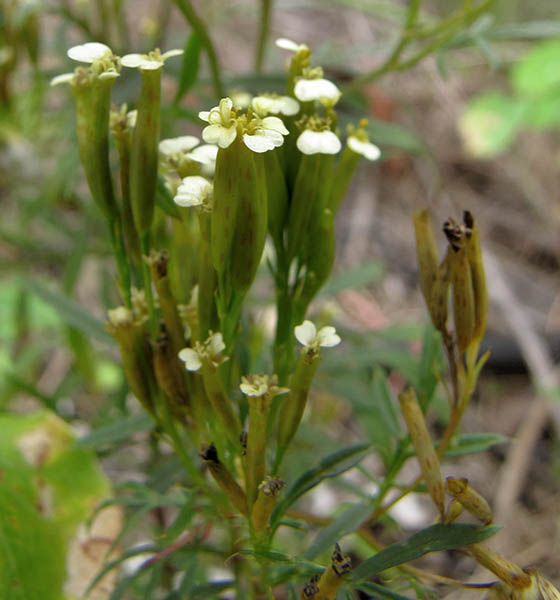
Climate and Temperature
Tagetes minuta thrives in India’s warm, tropical climate. It grows best in areas with hot summers and mild winters. The ideal temperature range is between 18-30°C (64-86°F).
The plant can tolerate higher temperatures, but growth may slow down in extremes above 35°C (95°F). It can survive light frosts, but hard freezes will damage the foliage. In most parts of India, tagetes minuta can be grown year-round.
Sunlight Requirements
Tagetes minuta requires full sun exposure to grow properly. It needs a minimum of 6-8 hours of direct sunlight per day. Insufficient light will result in sparse, leggy growth.
For best results, choose a planting site that receives sunlight throughout the day, such as a sunny herb garden or a spot near a south-facing wall. In India, dappled shade in the afternoon is acceptable during the hottest months.
Soil Requirements
Tagetes minuta thrives in well-draining, fertile soil. The ideal soil pH range is 5.5 to 7.0. Very acidic or alkaline soils should be amended with compost or other organic matter to reach the proper pH level.
The soil should be loose and crumbly, with a good balance of nutrients. Before planting, till the soil to a depth of 8-12 inches to break up compacted layers and improve drainage. Mix in aged compost or manure to enrich the soil.
Propagating Tagetes Minuta
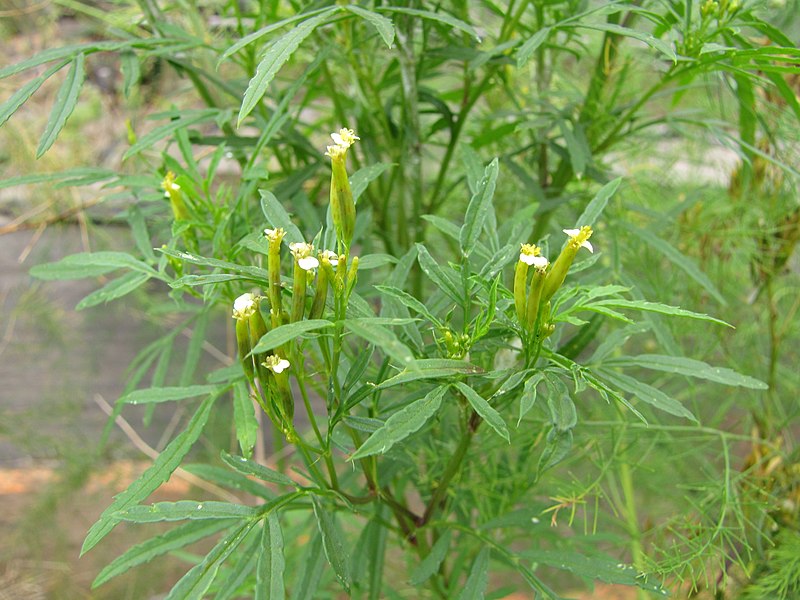
Tagetes minuta can be started from seeds, transplanted seedlings, or stem cuttings.
Starting from Seeds
To start tagetes minuta from seeds, sow them indoors 6-8 weeks before the last expected frost date. Use small containers or seed starting trays filled with seed starting mix.
Sow the seeds 1⁄4 inch deep and keep the soil moist. Place the containers in a warm area with temperatures around 70°F (21°C). Seedlings will emerge within 5-10 days.
Once they have 4-6 true leaves, harden off the seedlings for 7-10 days by placing them outdoors in a partially shady spot for a few hours each day. Then transplant them into the garden after the danger of frost has passed.
Transplanting Seedlings
For a quicker harvest, start with purchased seedlings or transplants from your local nursery. Look for young plants about 6 inches tall with healthy green leaves.
Before transplanting them into the garden, harden off the seedlings as described above. Transplant them on an overcast day or in the evening to avoid transplant shock.
Space the seedlings 12-15 inches apart in rows spaced 1-2 feet apart. Dig holes the same depth as the seedling pots and bury the stems up to the lowest set of leaves. Water thoroughly after transplanting.
Propagating from Cuttings
Tagetes minuta can also be propagated from tip cuttings in spring or summer. Take 5-6 inch cuttings from the tips of healthy stems. Remove the lower leaves and place the cuttings in containers filled with propagating mix.
Keep the mix moist and maintain bottom heat around 70°F (21°C). New roots will form within 2-3 weeks, at which point the cuttings can be transplanted into the garden.
Caring for Tagetes Minuta
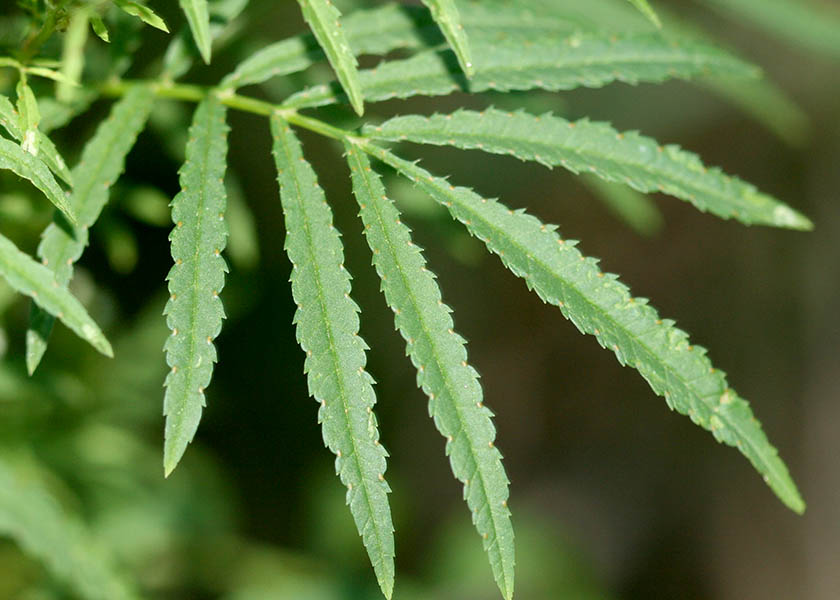
Proper care and maintenance will keep your tagetes minuta plants healthy and productive.
Watering
Tagetes minuta needs consistently moist soil during the growing season. Water whenever the top 1-2 inches of soil become dry. Provide 1-2 inches of water per week by rainfall or manual watering.
Avoid overwatering, which can lead to root rot. Mulch around the plants to help retain soil moisture. In very hot climates, afternoon shade may be needed to prevent excess wilting.
Fertilizing
Apply a balanced liquid fertilizer every 2-4 weeks during the growing season. Fish emulsion or compost tea make excellent organic options. Discontinue fertilizing 6-8 weeks before the expected harvest to concentrate the flavors.
Pest and Disease Control
Common pests affecting Tagetes minuta include aphids, whiteflies, slugs, and snails. Diseases to watch for are downy mildew, leaf spot, and root rot.
Remove pests by hand or use insecticidal soap. Improve airflow and avoid wetting foliage to prevent disease. Rotate crops each year and remove diseased plants promptly to limit outbreaks.
Growing marigolds nearby can help deter pests like nematodes, aphids, and beetles.
Harvesting Tagetes Minuta
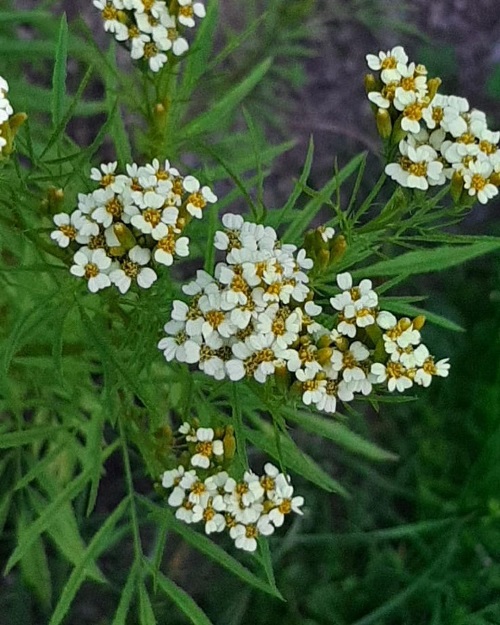
When to Harvest
Tagetes minuta can be harvested multiple times throughout the growing season. Harvest leaves when the plants reach 6 inches tall. For best flavor, cut whole stems when the plants begin flowering.
Flowers are also edible and can be harvested when fully open. Make sure to remove any dead or damaged foliage at harvest time.
How to Harvest
To harvest leaves, individual leaves can be picked as needed. To harvest whole stems, use pruning shears to cut stems near the base of the plant.
For flowers, pick individual flower heads leaving behind some foliage.
Storage and Preservation
Fresh tagetes minuta will keep for 2-3 days when stored in the refrigerator in a container with a damp paper towel. The leaves and flowers can also be dried or frozen for longer term preservation.
To dry, place stems or flower heads on dehydrator racks or hang bundles in a warm, dry area until crispy. Store dried leaves in airtight jars. To freeze, chop leaves and freeze in ice cube trays with water or stock.
Conclusion
With its culinary and medicinal benefits, tagetes minuta is a valuable herb for any Indian garden. By choosing an appropriate planting site, providing adequate care, and harvesting at the right time, you can enjoy a successful harvest of this flavorful plant.
Tagetes minuta is easy to grow in India’s favorable climate. Give it a try this season for a burst of flavor and color in your garden!
FAQs
What are other common names for tagetes minuta?

Other common names include Mexican marigold, Mexican mint marigold, Spanish tarragon, khursani ajwain, and sufeda barri.
Where is tagetes minuta native to?

Tagetes minuta is native to Central and South America. It grows wild in areas ranging from the southwestern United States to Argentina.
Is tagetes minuta an annual or perennial plant?

Tagetes minuta is an annual plant and completes its lifecycle within one growing season. It can be grown as a re-seeding annual in suitable climates.
What does tagetes minuta taste like?
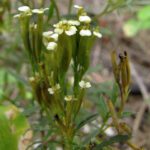
Tagetes minuta has an anise-like flavor reminiscent of tarragon. The leaves and flowers emit a spicy, earthy scent when crushed.
Can you eat tagetes minuta flowers?

Yes, the flowers of tagetes minuta are edible. They can be used as a garnish or incorporated into various dishes. Remove the bitter white base of the flowers before eating.
Does tagetes minuta have medicinal uses?

Traditionally, tagetes minuta has been used as a digestive aid, diuretic, sedative, and for wound healing. Research also indicates it has antimicrobial and antioxidant properties. However, consult your doctor before using tagetes minuta medicinally.
How tall does tagetes minuta grow?
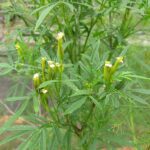
Tagetes minuta typically grows 1-3 feet tall. Well-fed plants provided with ideal growing conditions can reach up to 5 feet.
Is tagetes minuta deer resistant?

Yes, deer and rabbits generally avoid tagetes minuta due to its strong scent. Planting it can help deter browsing by wildlife.
Can you grow tagetes minuta from cuttings?

Tagetes minuta can be easily propagated from stem cuttings. Take 5-6 inch cuttings, treat with rooting hormone, and place in potting mix. Keep moist until roots form.
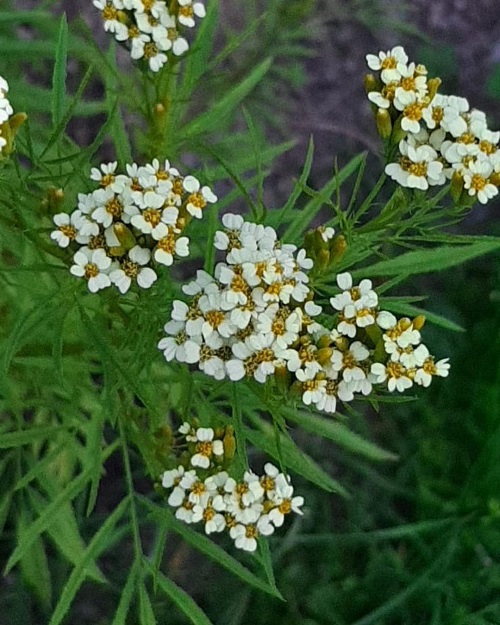
3 thoughts on “How to Grow Tagetes Minuta in India?”